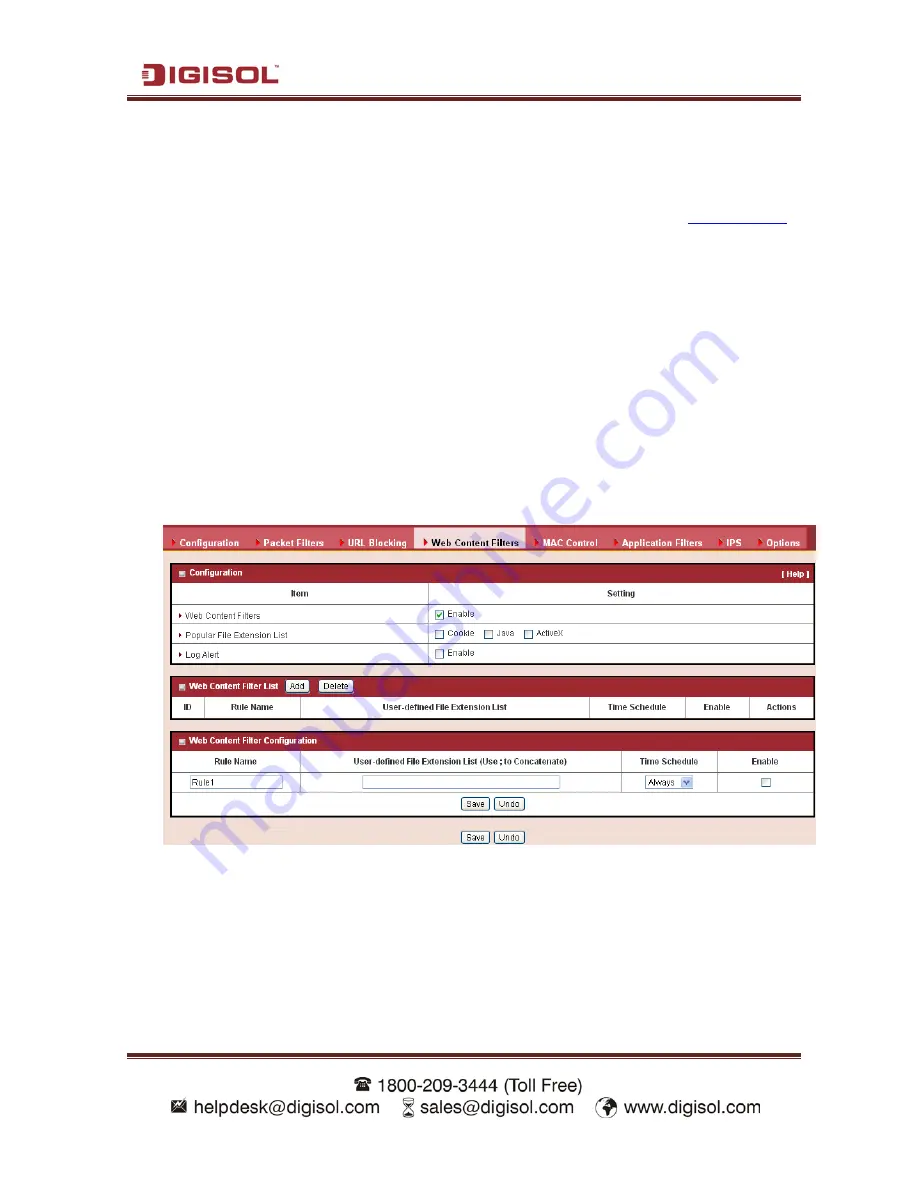
DG-LB1054UV User Manual
61
5.
Rule Name:
Give an appropriate name to the rule.
6.
URL/Domain Name/Keyword:
If any part of the Website's URL matches the
pre-defined word, the connection will be blocked. You can enter up to 10 pre-defined
words in a rule and each URL keyword is separated by ",", e.g., “abc, bt, org”; In addition
to URL keywords, it can also block the designated domain name, like “
www.xxx.com
“,
“www.123aaa.org, mma.com”.
7.
Destination Port:
Enter the destination port.
8.
Time Schedule:
The rule can be turn off according to the schedule rule you specified,
and give user more flexibility on access control. By default, it is always turned on when
the rule is enabled. For more details, please refer to the
System
->
Scheduling
menu.
Afterwards, click on “Save” to store your settings or click “Undo” to give up the changes.
3.2.1.3 Web Content Filter
Web Content filter
can block files with the specific extension, like ".exe", ".bat"
(applications), "mpeg” (video) and Scripts Type, like Java Applet, Java Scripts, cookies,
Active X.
1.
Web Content Filters
: Check if you want to enable Web Content Filter.
2.
Popular File Extension List:
Check which extension types, Cookie, Java, ActiveX, are
to be blocked
3.
User-defined File Extension List
: You can enter up to 10 file extensions in a rule to be
blocked.
4.
Time Schedule:
The rule can be turned off according to the schedule rule you specified,
and give user more flexibility on access control. By default, it is always turned on when
the rule is enabled. For more details, please refer to the
System
->
Scheduling
menu.






























